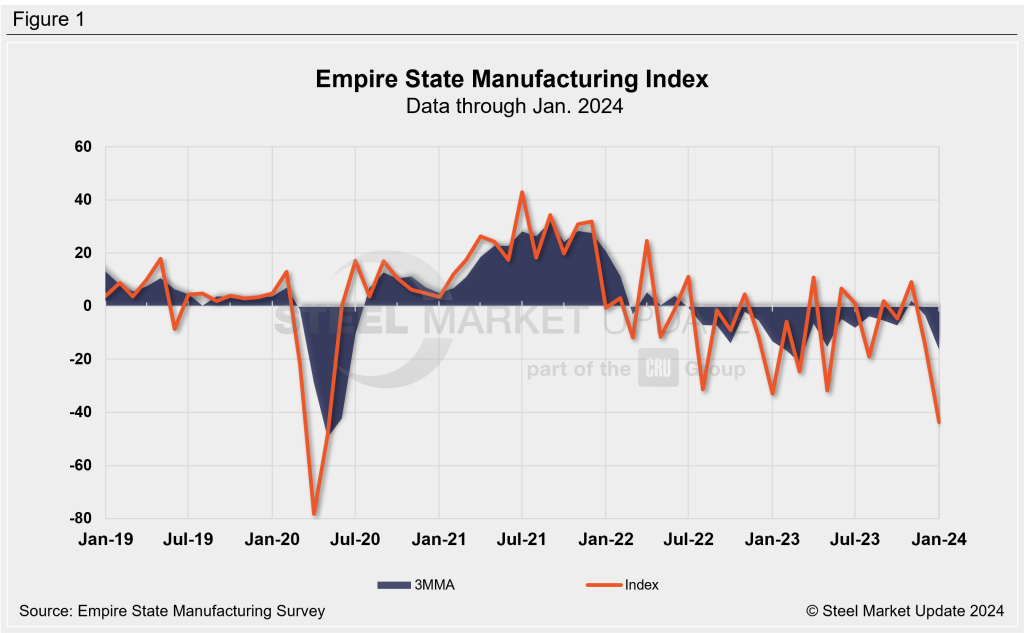Economy

Manufacturing activity in New York lowest since pandemic
Written by David Schollaert
January 18, 2024
New York State saw manufacturing shrink in January, reaching its lowest reading since the depths of the pandemic in early 2020, according to the latest Empire State Manufacturing Survey.
The headline general business index dropped to -29.2 points from December’s upwardly revised reading of -14.5, the survey said. The new orders index tumbled 38.1 points to -49.4 month over month (m/m), and the shipments index dropped 24.9 points to -31.3.
January’s reading is the second lowest reading ever, outpaced only by the most significant drop in May 2020. It’s also even lower than during the severe 2007-09 recession.
Over the past two months, the index has plummeted 58.2 points, driven by a decline in new orders. Orders are a leading indicator of future business activity.
The prices paid index for manufacturing in New York moved higher by 6.5 points to 23.2, while the prices received index slipped two points to 9.5. Unfilled orders continued to shrink significantly, and delivery times have shortened, which usually happens when business dries up. Employment and hours worked also contracted, the report said.
“This outsized drop suggests January was a difficult month for New York manufacturers, with employment and hours worked also contracting,” said Richard Deitz, New York Fed’s economic research advisor.
Optimism about the next six months remained subdued, the report said.
The index for future business conditions was up seven points to 18.8, while improvement in investment plans was a welcome sign, with the capital-spending index increasing ten points to 13.7.


David Schollaert
Read more from David SchollaertLatest in Economy

Architecture billings continue to slide in March
Architecture firms said billings continued to decline in March, according to the latest Architecture Billings Index (ABI) released by the American Institute of Architects (AIA) and Deltek.

Beige Book shows concerns about trade policy
Manufacturing was mixed, but two-thirds of districts said activity was little changed or had declined.

New York state manufacturing index drops again in April
Firms were pessimistic, with the future general business conditions index falling to its second lowest reading in the more than 20-year history of the survey

Construction adds 13,000 jobs in March
The construction sector added 13,000 jobs, seasonally adjusted, in March, but tariffs could undermine the industry.

Supply chains, end-users brace for impact from tariffs
Supply chains are working through what the tariffs mean for them
